Visiting hummingbirds are one of the greatest garden delights. The sound of their wings, the speed of their movements, the shimmer of their feathers – all this makes them a highly attractive garden guest. Invite them to your garden with this hummingbird food recipe.
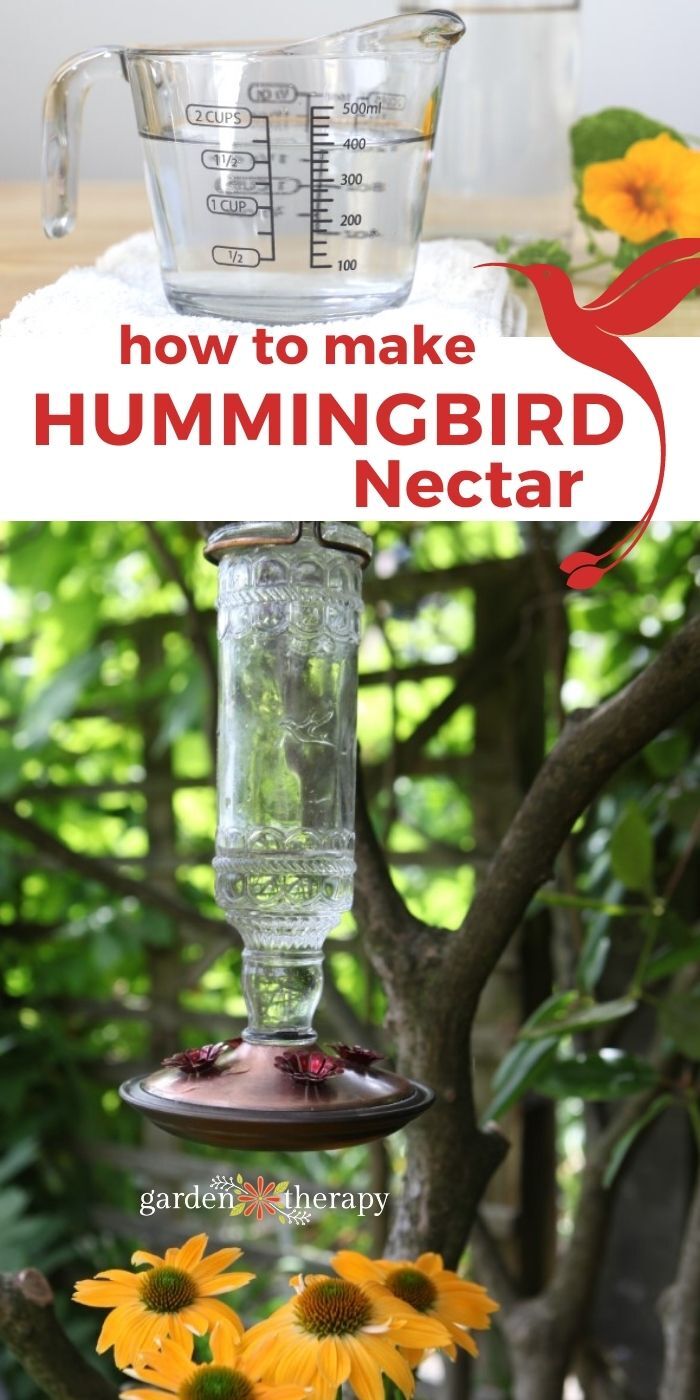
A month after my mother passed away, a hummingbird came up to me when I was in the garden. She came close to my face and fluttered in place while looking directly into my eyes. She was probably a foot away from me and stayed there for a minute or more.
I was frozen. I felt like she was looking at me and trying to tell me something. Or perhaps she was looking at me gardening the way we, humans, look at animals in their natural habitat.
I said hello and watched her for a while before she darted off to a tree. Some folks have said that it could have been my mother coming to check on me. She sure loved hummingbirds and fed them all year long. She would have been delighted to take the form of a hummingbird.
More likely, this sweet little creature was just checking me out, and very possibly demanding that I go clean the feeder!

This hummingbird food recipe comes from my book, Garden Alchemy. It is one of over 80 recipes for the garden, including recipes for soil, fertilizer, compost, and more projects to encourage backyard wildlife. Find the book in your country and grow organically!
Anna’s Hummingbird
Hummingbirds are everywhere in my hometown, Vancouver. In fact, Anna’s Hummingbird is the official bird of the city. They have emerald feathers and a rose-pink throat, showing off their beauty in the fleeting moments at my feeder. Their houses are so small, you may find them in your potted plants.
A hummingbird in snow may not be such a rare sight these days. Due to climate change, the Anna’s Hummingbird has drastically changed their migration patterns. Many are now in Vancouver for the entire winter.
Unfortunately, this means the birds have difficulty in finding food for the winter. This has led to many people offering hummingbird feeders year-round, including winter feeding. Without flowers and nectar, the feeders are their only source of food.
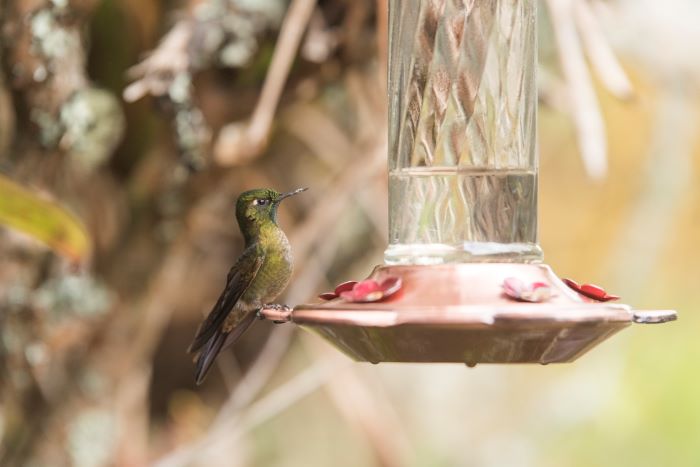
Hummingbird Food Ratio of Water to Sugar
Is it okay to feed hummingbirds sugar water? Absolutely! Sugar water is the best and least expensive way to feed hummingbirds in your garden. It acts as an additional source of nectar when there aren’t enough flowers in the area.
The ideal sugar/water ratio is 1 to 4. For every cup of sugar you add, mix in four cups of water. You can make as big of a batch as you would like, refrigerating any leftovers for up to a week.
It’s also important to note that while we often hear of sugar alternatives that are better for human consumption, plain white sugar is best for hummingbird food. It should not be replaced with maple syrup, honey, brown sugar, coconut sugar, stevia, or any other sugar substitute.
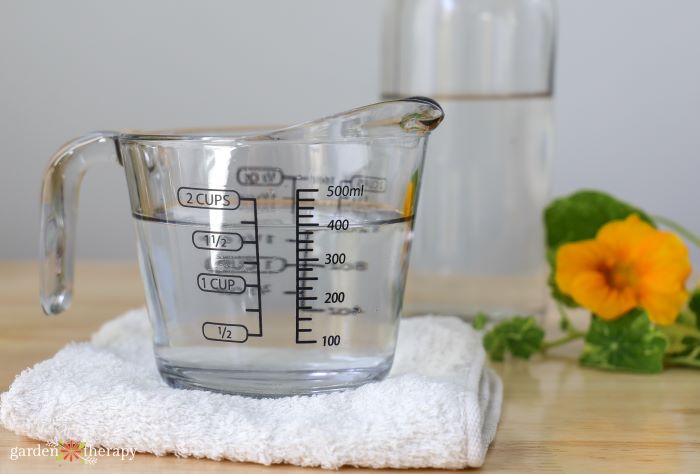
Hummingbird Food Recipe
Hummingbirds are beautiful and joy to watch in your garden or through the window. If you don’t have enough reasons to love them, they also fill their belly with aphids, mosquitoes, gnats, whiteflies, and insect eggs. Invite them for a sweet cocktail and they will happily reward you with pest control and silly antics. Here’s how to make hummingbird food!
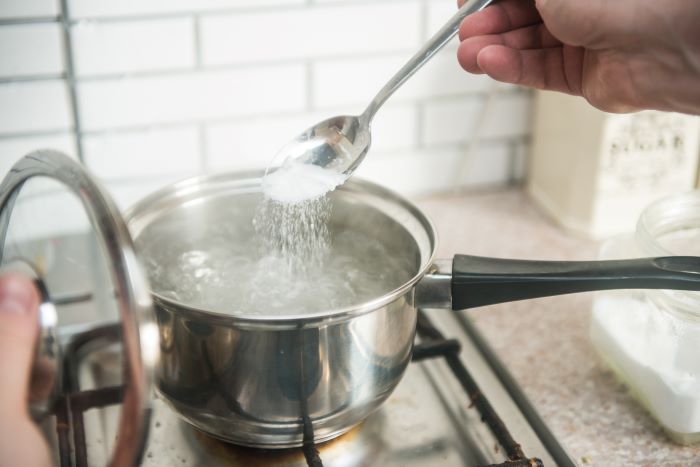
Materials
1 part sugar
4 parts water
Make It!
Boil your sugar and water together in a pot. Allow the mixture to fully cool before you place it in your feeder. Place any unused hummingbird food in the refrigerator for up to a week.
Replace the nectar and clean the feeder once a week when it’s cool and 2-3 times a week when hot.
Frequently Asked Questions About Hummingbird Food
How Often Do I Need to Change DIY Hummingbird Nectar?
Frequent cleaning of your hummingbird feeder is essential as a responsible birder. Not cleaning your feeder can make the little birds sick.
When it’s hot outside, clean your feeder 2-3 times a week. When it’s cold outside, once a week works fine. For thirsty hummingbirds who finish your feeder before the week is up, clean it every time it is empty.
In terms of how you clean it, a good soak in hot water is all you need. Dish soap can leave residue in the feeder that may be harmful to hummingbirds.
Is Tap Water Safe for Hummingbirds?
Yes. Ideally, you will want to use spring water but tap water works just fine. Don’t use any distilled water in your hummingbird food recipe.
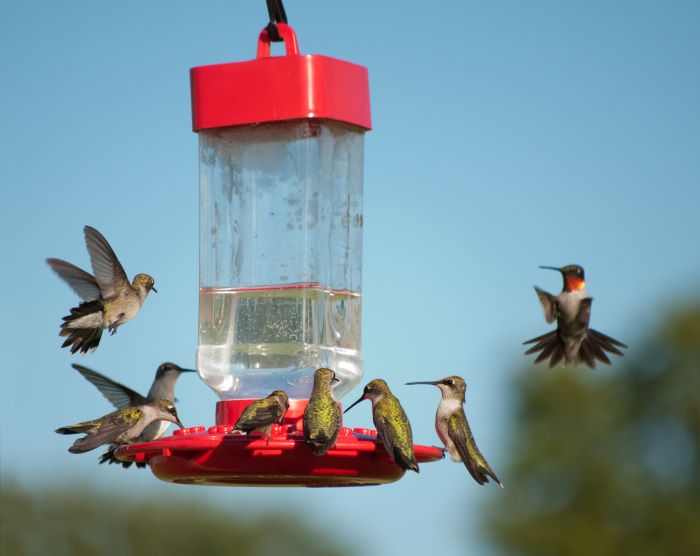
Where is the Best Place to Attract Hummingbirds?
Place your feeder four feet above the ground, ideally in the shade. The shade helps to keep the water from spoiling early and gives hummingbirds a break from the hot afternoon sun. Place the feeder close to other shrubbery so that they can quickly go to a hiding space as they don’t like to be in the open for long.
Water should NOT be dyed red. That’s a no-no as it can harm the birds. Hummingbirds do need the red colour to attract them, but just the little bit of red I have on my feeder is enough. I started with a red plastic feeder and they learned that I put out nectar for them. When the food runs out, the hummingbirds sure let me know. They buzz me in the garden or come hang out on the windowsill outside my office until I get my butt out there with new nectar.
What is the Best Flower to Attract Hummingbirds?
Hummingbirds stop to feed every 15 minutes! As you can imagine, they are flitting around all day from flower to flower. When choosing flowers to attract hummingbirds, aim for flowers with long blooming times and bright colours. Red flowers are the most popular.
Some flowers they love include:
- Honeysuckle
- Bee Balm
- Fuchsia
- Firebush
- Hollyhock
- Petunias
- Columbine
- Cardinal
- Salvia
- Lupine
- Zinnia

Salvia ‘Sally Fun’
When Should I Put Out My Hummingbird Feeder?
Hummingbirds migrate due to genetic programming, so don’t fear that your feeders will persuade them to stay too long or come back too early. Put your feeder out approximately a week before they are set to return for the spring and summer. This time is different based on where you are, so check with your local bird club for an exact date.
Leave your feeder out as long as the birds are there and drinking it. Like Vancouver, you may have hummingbirds staying longer than normal in the fall. Keeping a feeder out can help these late migrants or winter dwellers. Always make sure to clean the feeder once a week even if the hummingbird food is going unused.

Hummingbird Feeders
When searching for a hummingbird feeder, the first thing you want to look for is one with an ant moat. This prevents the hummingbird food from pooling and dropping, which can attract ants.
As I mentioned earlier, having red on your feeder will help to attract hummingbirds. You will also want to consider size, ensuring it is not too big of a feeder for your local population. Otherwise, you will be wasting food when it goes unused and it is time to clean it.
Here are some great options:
- Diamond Wine Top-Fill Glass Hummingbird Feeder
- First Nature 3055 32-Ounce Hummingbird Feeder
- First Nature 3091 16-Ounce Hummingbird Flower Feeder
Now that you know how to feed these lovely creatures, you’ll be rewarded with their beauty month after month. Enjoy them!
More Posts About Pollinators
- How to Attract Ladybugs to Your Garden and Why You Should
- Attract Pretty Pollinators with An Irresistible Butterfly Garden
- How to Attract Butterflies, Bees, and Hummingbirds with A Small-Space Pollinator Garden
- Bee a Good Garden Host: How To Make a Bee Bath
- How to Make a DIY Butterfly Feeder
Hummingbird Food
Equipment
- 1 Stovetop pot
Supplies
- 1 cup white sugar
- 4 cups water
Instructions
- Boil the sugar and water together in a pot and allow it to cool.
- Fill the feeder with the nectar and replace and clean the feeder every 2 to 3 days in warm weather, once a week in cool weather.
- Store any leftover nectar in the refrigerator for a week.

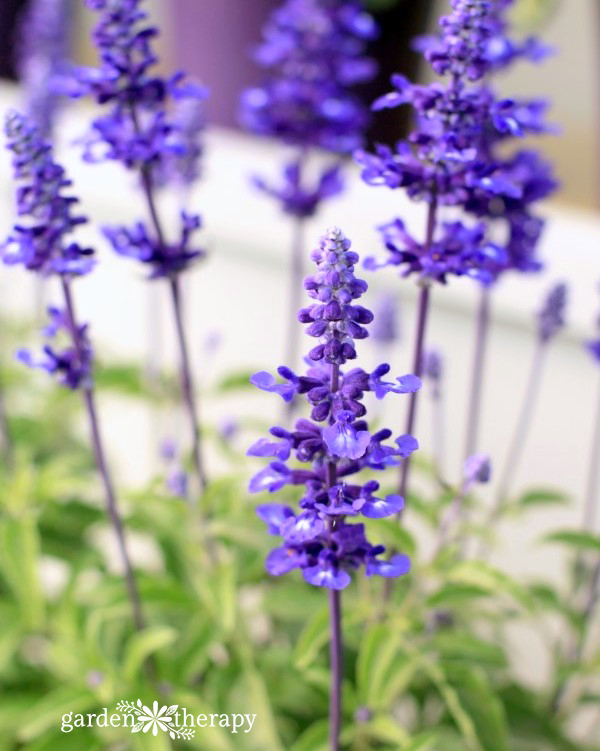
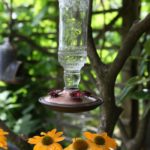
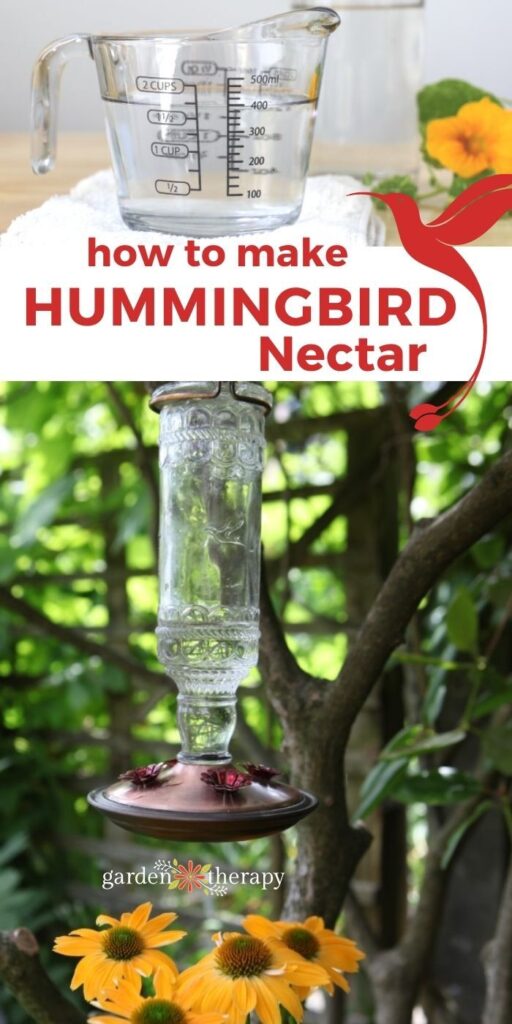



I live in California, so things are different where I am. I’m curious: I thought non-California hummingbirds sorta hibernated – don’t know the correct term – in cold-weather places. Doesn’t that mean that the birds wouldn’t be feeding then? Would you mind explaining how this works where you are?
Also, I’ve been reading that feeders are problematic – every other day cleaning or not using feeders at all to prevent the spread of disease. Is this not a factor during the winter?
I’d never considered how cold weather affects their cycles!
What are non-California Hummingbirds? I can’t find any information on this. My understanding that most Hummingbirds fly to Central and South America while some that make it all the way to Canada could potentially roost in the warmer climates of the US. As for winter and diseases…most infectious “bug” need to a certain temp to reproduce and be active.
I am in Oaxaca, Mexico. I can’t find white sugar. What can I use?